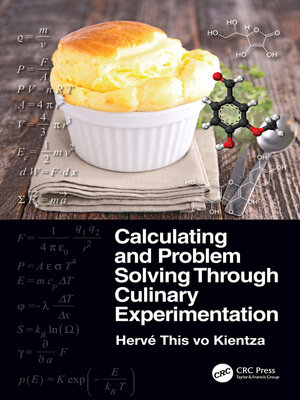
Sign up to save your library
With an OverDrive account, you can save your favorite libraries for at-a-glance information about availability. Find out more about OverDrive accounts.
Find this title in Libby, the library reading app by OverDrive.



Search for a digital library with this title
Title found at these libraries:
| Loading... |
While many books proliferate elucidating the science behind the transformations during cooking, none teach the concepts of physics chemistry through problem solving based on culinary experiments as this one by renowned chemist and one of the founders of molecular gastronomy.
Calculating and Problem Solving Through Culinary Experimentation offers an appealing approach to teaching experimental design and scientific calculations.
Given the fact that culinary phenomena need physics and chemistry to be interpreted, there are strong and legitimate reasons for introducing molecular gastronomy in scientific curriculum.
As any scientific discipline, molecular gastronomy is based on experiments (to observe the phenomena to be studied) and calculation (to fit the many data obtained by quantitative characterization of the studied phenomena), but also for making the theoretical work without which no real science is done, including refuting consequences of the introduced theories. Often, no difficult calculations are needed, and many physicists, in particular, make their first steps in understanding phenomena with very crude calculations. Indeed, they simply apply what they learned, before moving to more difficult math.
In this book, the students are invited first to make simple experiments in order to get a clear idea of the (culinary) phenomena that they will be invited to investigate, and then are asked simple questions about the phenomena, for which they have to transform their knowledge into skills, using a clear strategy that is explained throughout. Indeed, the is "problem solving based on experiments", and all this about food and cooking.
Key Features:
A unique mix of culinary arts and correct calculations, this book is useful to students as well as professors in chemistry, physics, biology, food science and technology.






